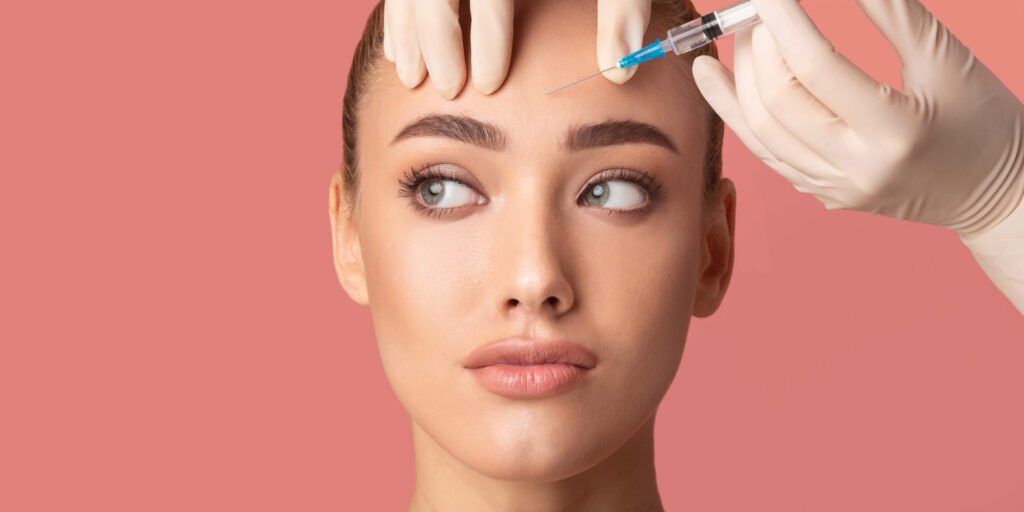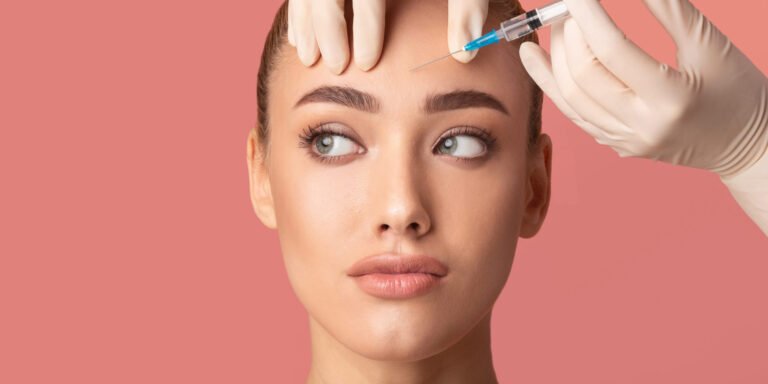Table of Contents
Introduction
The rising popularity of Botox treatments has led to a surge of interest in this seemingly miraculous cosmetic procedure. However, with the increased demand, it is vital for potential patients to comprehend the risks and potential Botox danger zones associated with Botox injections.
Botox Basics
Botox, a purified form of the botulinum toxin, works by temporarily paralyzing the targeted muscles, resulting in the reduction of fine lines and wrinkles. Common areas of application include the forehead, glabellar lines (the “11” lines between the eyebrows), and crow’s feet around the eyes.
The Expert’s Role
Choosing a qualified professional for Botox injections is paramount to a successful and safe outcome. A skilled practitioner, well-versed in facial anatomy, can minimize risks by accurately identifying and injecting the appropriate muscles.
Botox Danger Zones: A Closer Look

Although Botox is generally safe when administered by an expert, certain regions require extra caution due to their proximity to delicate structures:
- Forehead and glabellar lines: Incorrect placement of injections can lead to eyelid or eyebrow ptosis (drooping).
- Crow’s feet: Injections too close to the eye can cause temporary double vision.
- Bunny lines: Careless injections may inadvertently affect nearby muscles, resulting in an unnatural facial expression.
- Eyebrow shaping: Overcorrection can create an unnatural, “surprised” look.
- Smile lift and downturned mouth corners: Improper technique can lead to facial asymmetry or difficulty speaking.
Complications and Side Effects
Patients must be aware of the potential complications and side effects of Botox. While temporary side effects such as bruising, swelling, and pain at the injection site are common, more serious issues can arise from infections, allergic reactions, or improper injection techniques.
How to Spot an Unqualified Practitioner
To identify unqualified practitioners, be vigilant for red flags during consultations, such as a lack of credentials, poor communication, or evasiveness about the risks involved. Additionally, beware of cheap Botox deals that may compromise quality and safety. Patient testimonials and online reviews can provide invaluable insight into a practitioner’s reputation.
Where Not To Inject Botox
When administering Botox, it is crucial to avoid injecting the substance into certain areas to prevent complications or undesirable results. Here are some key regions where Botox should not be injected:
- Blood vessels: Injecting Botox directly into blood vessels can lead to serious complications, such as embolism or tissue necrosis.
- Orbicularis oculi muscle: This muscle surrounds the eye and helps with eyelid closure. Injections too close to the eye can cause temporary double vision or ptosis (drooping eyelids).
- Levator palpebrae superioris muscle: This muscle helps raise the eyelid. Injections in this area can result in ptosis.
- Procerus and depressor supercilii muscles: These muscles are responsible for frowning. Injecting Botox into these muscles without proper knowledge of facial anatomy can cause brow asymmetry or the “Spock brow” effect, where the outer eyebrows lift unnaturally.
- Mid-cheek region: Injections in this area may inadvertently affect the zygomaticus major muscle, leading to facial asymmetry or difficulty smiling.
- Mentalis muscle: This muscle is located on the chin and helps control lower lip movement. Injections into the mentalis muscle can result in an unnatural-looking “pebble chin” effect.
- Platysma muscle: Injecting Botox into this neck muscle without proper anatomical knowledge can lead to difficulty swallowing or speaking, and may result in an unnatural appearance.
- Inflamed or infected areas: Botox should never be injected into areas with active skin infections or inflammation, as this may exacerbate the problem or lead to the spread of infection.
To minimize the risk of complications or undesirable results, it is crucial to select a qualified and experienced practitioner who is well-versed in facial anatomy and proper Botox injection techniques.
Safe Botox: Injection Site Preparation
Proper pre-treatment guidelines for patients, such as avoiding blood-thinning medications, can help minimize risks. A clean and sterile environment is crucial for preventing infections during the procedure.
Aftercare and Recovery
Following post-treatment instructions, such as refraining from strenuous activities and avoiding direct sunlight, can optimize results. Seek immediate medical attention if severe complications arise, such as difficulty breathing or swallowing.
Alternative Treatments to Botox
For those hesitant about Botox, alternatives such as dermal fillers, laser treatments, and chemical peels can offer effective solutions. Non-invasive skin rejuvenation methods, like microdermabrasion and ultrasound therapy, provide additional options.
The Legal Aspect: Informed Consent and Patient Rights
Thorough consultations are necessary for patients to fully understand the risks involved, and informed consent must be obtained before proceeding. To protect oneself from malpractice, researching patient rights and having a comprehensive understanding of the procedure is essential.
Finding the Right Balance: Botox and Natural Beauty
Setting realistic expectations and knowing when to decline further treatments can help maintain a harmonious balance between Botox and natural beauty. Overuse or unnecessary treatments can result in an unnatural appearance.
FAQ’s Related to Botox Danger Zones
Botox danger zones are areas of the face where improper injections can lead to complications or undesirable results. These include the forehead, glabellar lines, crow’s feet, bunny lines, eyebrow shaping, and smile lift or downturned mouth corners.
While rare, improper Botox injections can lead to long-term complications such as facial asymmetry, nerve damage, or muscle weakness. However, most side effects are temporary and resolve over time.
Select a qualified and experienced practitioner, follow pre- and post-treatment guidelines, and communicate openly with your provider to minimize risks.
Seek immediate medical attention if you experience severe complications such as difficulty breathing or swallowing, extreme facial pain, or signs of infection.
While rare, some individuals may experience an allergic reaction to Botox. Symptoms include itching, rash, shortness of breath, or swelling. If you suspect an allergic reaction, contact your healthcare provider immediately.
Conclusion
Ultimately, making informed decisions about Botox and emphasizing safety can lead to a positive experience. The importance of selecting a qualified practitioner cannot be overstated, as this decision can significantly impact the outcome of the treatment.

